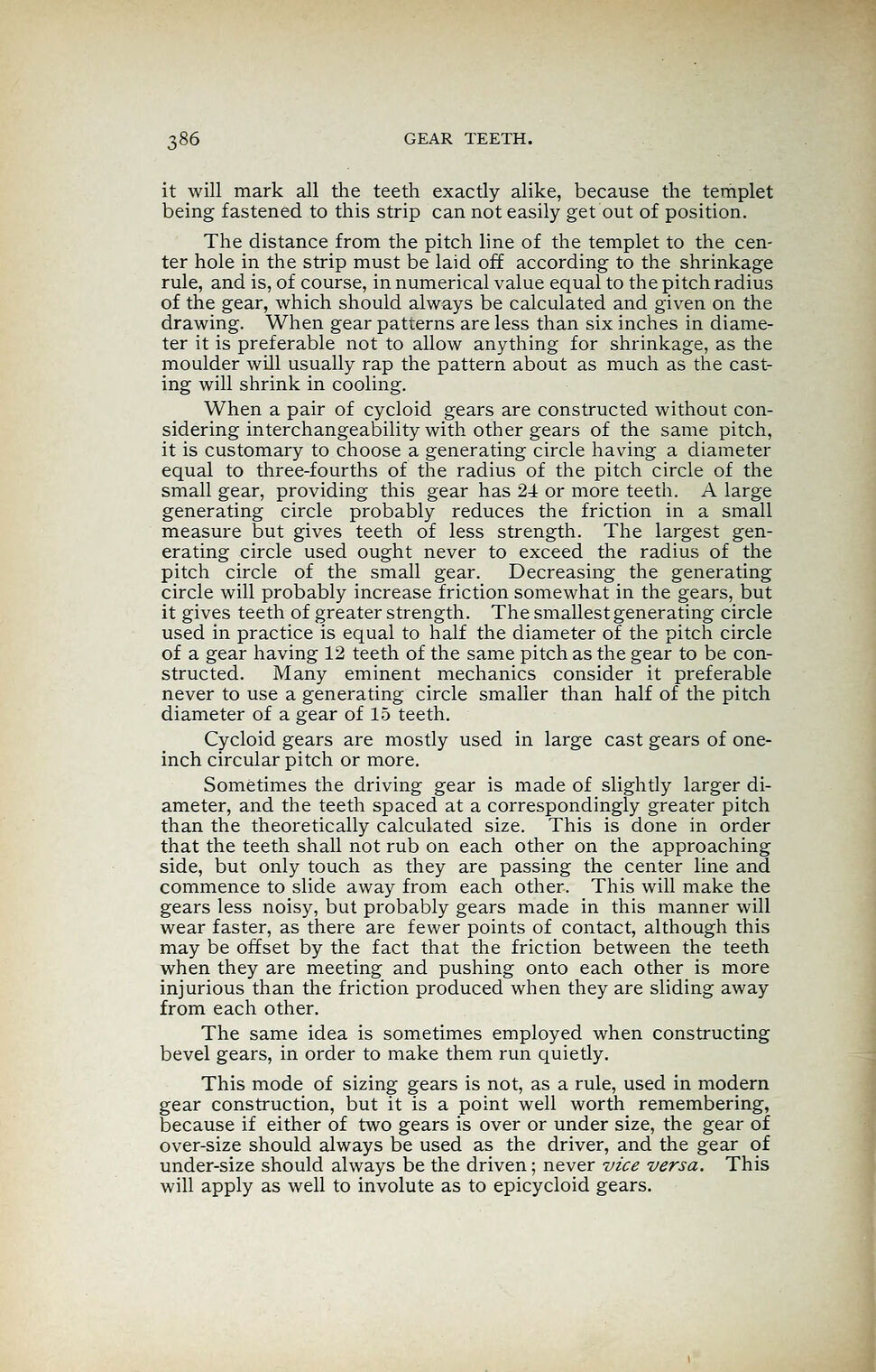
Full resolution (JPEG) - On this page / på denna sida - Gear Teeth - Cycloid teeth

<< prev. page << föreg. sida << >> nästa sida >> next page >>
Below is the raw OCR text
from the above scanned image.
Do you see an error? Proofread the page now!
Här nedan syns maskintolkade texten från faksimilbilden ovan.
Ser du något fel? Korrekturläs sidan nu!
This page has never been proofread. / Denna sida har aldrig korrekturlästs.
386 GEAR TEETH.
it will mark all the teeth exactly alike, because the templet
being fastened to this strip can not easily get out of position.
The distance from the pitch line of the templet to the cen-
ter hole in the strip must be laid off according to the shrinkage
rule, and is, of course, in numerical value equal to the pitch radius
of the gear, which should always be calculated and given on the
drawing. When gear patterns are less than six inches in diame-
ter it is preferable not to allow anything for shrinkage, as the
moulder will usually rap the pattern about as much as the cast-
ing will shrink in cooling.
When a pair of cycloid gears are constructed without con-
sidering in terchangeability with other gears of the same pitch,
it is customary to choose a generating circle having a diameter
equal to three-fourths of the radius of the pitch circle of the
small gear, providing this gear has 24 or more teeth. A large
generating circle probably reduces the friction in a small
measure but gives teeth of less strength. The largest gen-
erating circle used ought never to exceed the radius of the
pitch circle of the small gear. Decreasing the generating
circle will probably increase friction somewhat in the gears, but
it gives teeth of greater strength. The smallest generating circle
used in practice is equal to half the diameter of the pitch circle
of a gear having 12 teeth of the same pitch as the gear to be con-
structed. Many eminent mechanics consider it preferable
never to use a generating circle smaller than half of the pitch
diameter of a gear of 15 teeth.
Cycloid gears are mostly used in large cast gears of one-
inch circular pitch or more.
Sometimes the driving gear is made of slightly larger di-
ameter, and the teeth spaced at a correspondingly greater pitch
than the theoretically calculated size. This is done in order
that the teeth shall not rub on each other on the approaching
side, but only touch as they are passing the center line and
commence to slide away from each other. This will make the
gears less noisy, but probably gears made in this manner will
wear faster, as there are fewer points of contact, although this
may be offset by the fact that the friction between the teeth
when they are meeting and pushing onto each other is more
injurious than the friction produced when they are sliding away
from each other.
The same idea is sometimes employed when constructing
bevel gears, in order to make them run quietly.
This mode of sizing gears is not, as a rule, used in modern
gear construction, but it is a point well worth remembering,
because if either of two gears is over or under size, the gear of
over-size should always be used as the driver, and the gear of
under-size should always be the driven ; never vice versa. This
will apply as well to involute as to epicycloid gears.
<< prev. page << föreg. sida << >> nästa sida >> next page >>